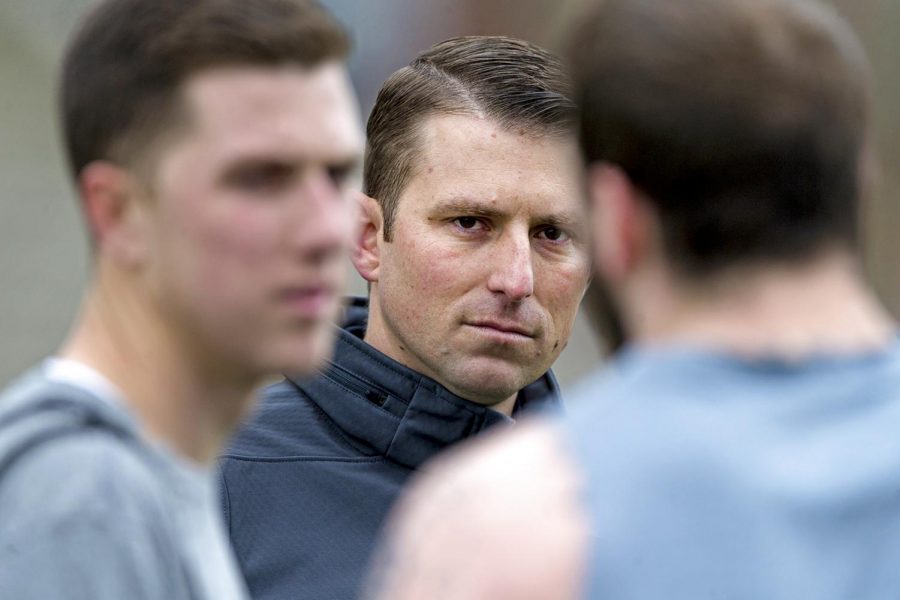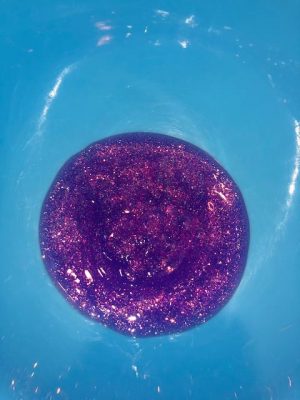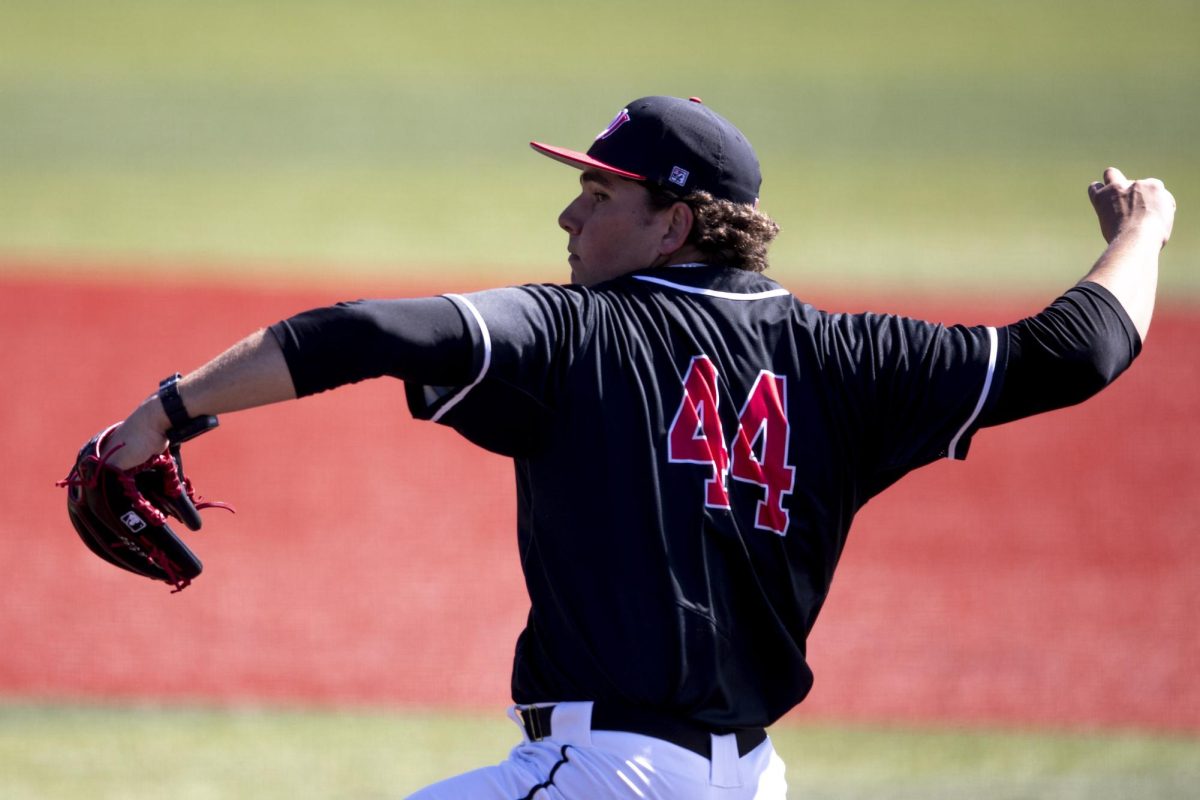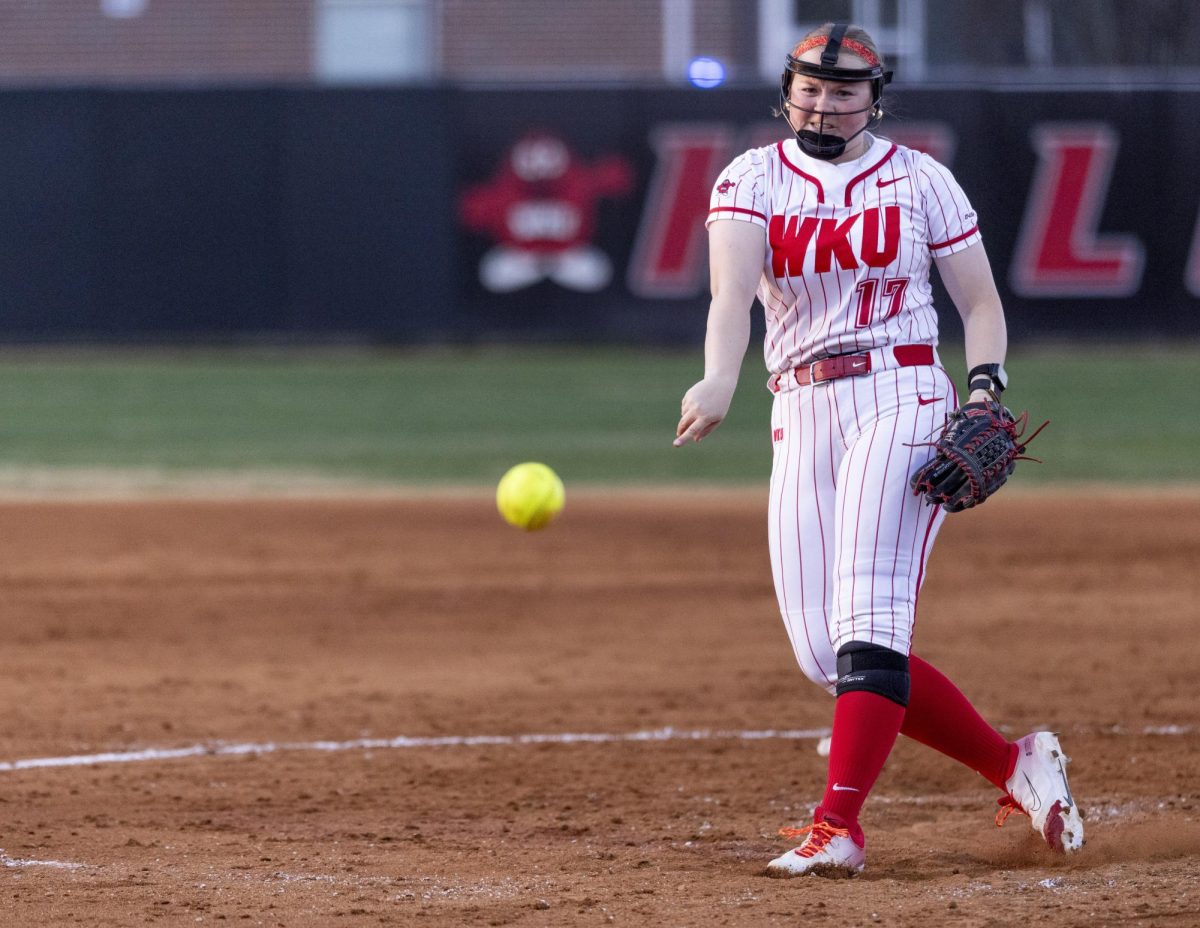How WKU football fell from its ‘golden era’
December 4, 2018
On Dec. 3, 2016, WKU students and fans were rushing the field at Houchens-Smith Stadium. The WKU football team had just won its second straight Conference USA championship. Head coach Jeff Brohm’s high-flying offense, featuring current Dallas Cowboys quarterback Mike White, Tennessee Titans wide receiver Taywan Taylor and Los Angeles Chargers offensive tackle Forrest Lamp, had been beating teams into oblivion all season.
WKU proceeded to blow Memphis out 51-31 in the Boca Raton Bowl. A CBS Sports article published after the bowl win suggested that the Hilltoppers might go undefeated during the 2017 season.
“This is the golden era of Western Kentucky football, and it’s time to start thinking about them as a New Year’s Six team alongside the powers in the American Athletic Conference,” the article by Brandon Wise stated.
In that season where Wise put undefeated expectations on the Hilltoppers, they finished 6-7 with a loss to Georgia State in the Cure Bowl. Fast forward another year, and the Hilltoppers have finished their season 3-9 and fired head coach Mike Sanford.
The downfall started immediately following the 2016 championship game. Even before the game, Brohm had been rumored to be interested in the head coaching job at Purdue, a job that he took between the conference championship and the Boca Raton Bowl, leaving defensive coordinator Nick Holt with the reigns as interim head coach. Holt led the team to victory in the bowl game, but was never seriously considered for the full-time head coaching job and soon followed Brohm to Purdue, where both still currently coach.
Athletic director Todd Stewart instead opted to go another direction: Notre Dame offensive coordinator Mike Sanford. Sanford, despite coming off of a 4-8 season with the Fighting Irish, made a lot of sense for the Hilltoppers in that he was at that time the youngest head coach in the Football Bowl Subdivision, and he was a great recruiter, an area in which Brohm never excelled.
“Back-to-back conference championships and consecutive 10-win seasons for the first time in the program’s 97-year history have raised the bar to an all-time high level,” Stewart said during Sanford’s introductory press conference. “Our next head coach must aspire for greatness and be ready to take on the exciting challenges and opportunities that come with success. Mike Sanford is that person.”
Sanford let the crowd know that he had some big aspirations for the team. His five objectives, which were printed on a sign in the press room inside the stadium, were to graduate every player who came through the program, serve the community, win the C-USA Championship, beat a Power 5 opponent every year and win a New Year’s Six bowl game.
“I have some lofty goals for this program because I believe that’s where this program can go,” Sanford said. “I believe those goals are certainly—as we sit here they look like they are out there. They look like they are far-reaching.”
Those goals started to look shaky in Week 2 of 2017 when Sanford failed in his quest to beat his first Power 5 opponent. Big Ten opponent Illinois ran over the Hilltoppers 20-7, with WKU’s lone touchdown coming late in the game when it didn’t affect the outcome.
For fans, it seemed that much of the problem was with Sanford. After several years of watching Brohm’s teams routinely score over 40 points on a weekly basis, Sanford’s run-first approach was boring to watch and felt to fans as if he were abandoning what had made the team great in the first place.
It didn’t help Sanford’s cause that he took such a hard-line stance with his style of football, which seemed to never give the best players the most touches. Late in his tenure, after a particularly bad game against Middle Tennessee State, Sanford insisted it could work.
“What looks like a lot of called passes are indeed actually—a decent percentage are called runs with options,” Sanford said. “You’re essentially making them defend the entire field with utilization of triple-option football.”
After a close loss to Louisiana Tech at home in 2017, the Hilltoppers strung together four straight wins midway through the year. Those wins went a long way in determining their bowl eligibility, as WKU wound up losing four of its last five regular season games to finish 6-6 and far out of the C-USA championship picture. WKU proceeded to play one of its worst games of the season in the Cure Bowl against GSU, a game which Stewart cited as a point where he started to think that Sanford wasn’t working out as head coach.
“That was a really disappointing performance,” Stewart said. “Really as a team I felt like we lacked energy. Felt like Georgia State honestly wanted the game more than we did, and that was disappointing because we had a lot at stake.”
Following the 2017 season, the Hilltoppers had to deal with some of the program’s greatest players leaving. White was drafted in the fifth round of the NFL Draft by the Cowboys and linebacker Joel Iyiegbuniwe was taken by the Chicago Bears in the fourth round. The Hilltoppers also lost tight end Deon Yelder.
Sanford worked over the offseason to try to fill the team’s hole at starting quarterback. Redshirt sophomore Steven Duncan fell out of the race for Week 1 after the Hilltoppers’ annual spring game when he was arrested for a DUI and suspended for the first game of the season against Wisconsin.
When the Hilltoppers finally began the season, led by redshirt senior Drew Eckels, things were immediately ground to a halt. They dropped the Wisconsin game 34-3 and the next week blew a 21-point lead to lose to Maine, an FCS opponent, at home. It was WKU’s first loss to an FCS opponent since 2011.
Despite the loss, players on the team kept optimism for the rest of the year.
“It’s only Week 2,” cornerback DeAndre Farris said at the time. “We’ve got 10 more games left and that’s a lot of games that we can win.”
Things didn’t improve much from that point. WKU did nearly accomplish the goal of defeating a Power 5 opponent, as the Hilltoppers led Louisville 14-3 but eventually lost 20-17 after being outscored 17-3 in the second half.
The Hilltoppers finally got a win the next week at Ball State before dropping six straight games. They eventually got two straight wins to end the season against Texas-El Paso and Louisiana Tech.
It would have seemed Sanford gave himself some support by winning the last two games of the regular season. Stewart gave him a vote of confidence during the last several weeks of the season.
“I believe in Mike, I believe in his staff, I believe in our players,” Stewart told a Herald reporter on Oct. 31. “We have a lot of young players playing a lot of key roles. Everyone’s hope is that the growth that they are going through this year leads to many victories in future years.”
The confidence proved short lived, and Sanford was fired on Nov. 25.
Compared to the Hilltoppers’ back-to-back conference championship runs, WKU saw declining attendance throughout Sanford’s tenure. The low in attendance came against UTEP, when only 6,221 people showed up to watch the Hilltoppers get a win on senior night.
“It really hurt for them because of the complete lack of energy we had in the stadium that night from a crowd standpoint,” Stewart said. “Their final Topper Walk, it might have had a hundred people there, and that can’t be.”
Another major issue for WKU in Sanford’s firing was his $1.2 million buyout. With the university recently hitting a rough patch financially, the buyout was a tough pill to swallow for an athletic department that had over $1 million cut from its operating budget.
Stewart said that the buyout money came from cash that the athletics department had left over from when Brohm, Petrino and former women’s basketball coach Michelle Clark-Heard’s buyouts, which were paid to the university when they left.
“It’s certainly a costly move,” Stewart said. “I think it’s costly to continue in the direction we’re going as well. The good thing is, while we’re not happy about this outcome, we’re really 3-1 in terms of these because we’ve been on the plus side three other times.”
WKU fans have not shown excitement for Hilltopper football over the last two years in the same way they did in the several years prior.
“Maybe we all took it for granted, you know, a little bit,” Stewart said. “Our intention is to get back to that type of place again and perhaps when we get back to it, it will mean more because unfortunately we’ve slumped down.”
In that team’s place sits one unsure of its future, one that has been through the ringer in the public eye and one that hopes and dreams of a return to the glory days that an ever-shrinking number of players got to experience.
That number might continue to drop as players who were loyal to Sanford might be tempted to transfer out of the program. When Brohm left, several of his players transferred, including star linebacker T.J. McCollum, who followed Brohm to Purdue.
“I think that they too know the reality of this,” Stewart said of the players. “Mike was the fourth head coach that we’ve had in six years. Now we’ll have another head coach. Change has been a constant in our program.”
One thing that might keep many of the players in place could be Tyson Helton, the new WKU head coach and the man who recruited some of the offensive players on the roster.
Helton is the man tasked with bringing back the glory days of the Hilltoppers. He was offensive coordinator under Brohm for the 2014 and 2015 seasons before stops at Southern California and Tennessee.
While Tennessee struggled offensively last season, leading many to question whether Helton would be fired, the new coach sounded sure of himself. Even WKU President Timothy Caboni, not known for his sports obsession in the way that his predecessor, spoke of the need.
“We are going to return to a style of offensive play for which WKU has been known,” Caboni said. “I’m very excited that we’re going to move to that.”
Helton has a few tools at his disposal to make that happen. Duncan has a strong arm and the ability to move around in the pocket to run the long-ball offense that Helton says he wants to use. Wide receiver Jacquez Sloan showed himself to be a consistent deep threat before injury ended his year in 2018. Running back Joshua Samuel also put together the fourth-best rushing season by a freshman in WKU history in terms of yards.
WKU fans will hope for the best—that one of these years, on a cold November Saturday, they’ll get to rush the field again and celebrate with the champions.
They’ll find out in eight months.
Reporter Matt Stahl can be reached at 270-745-6291 and matthew.stahl551@topper.wku.edu Follow him on Twitter at @mattstahl97.















